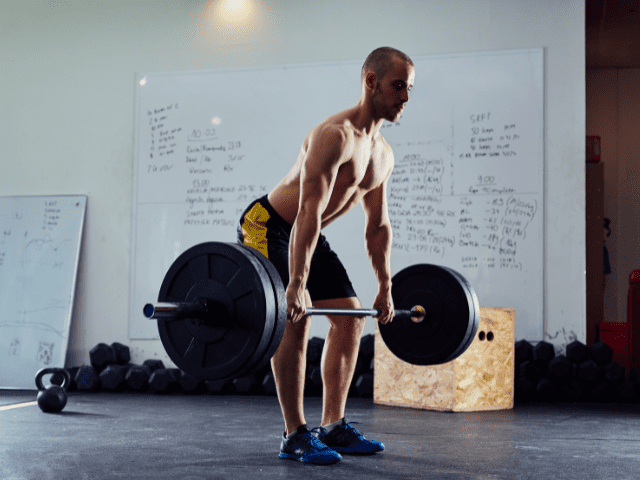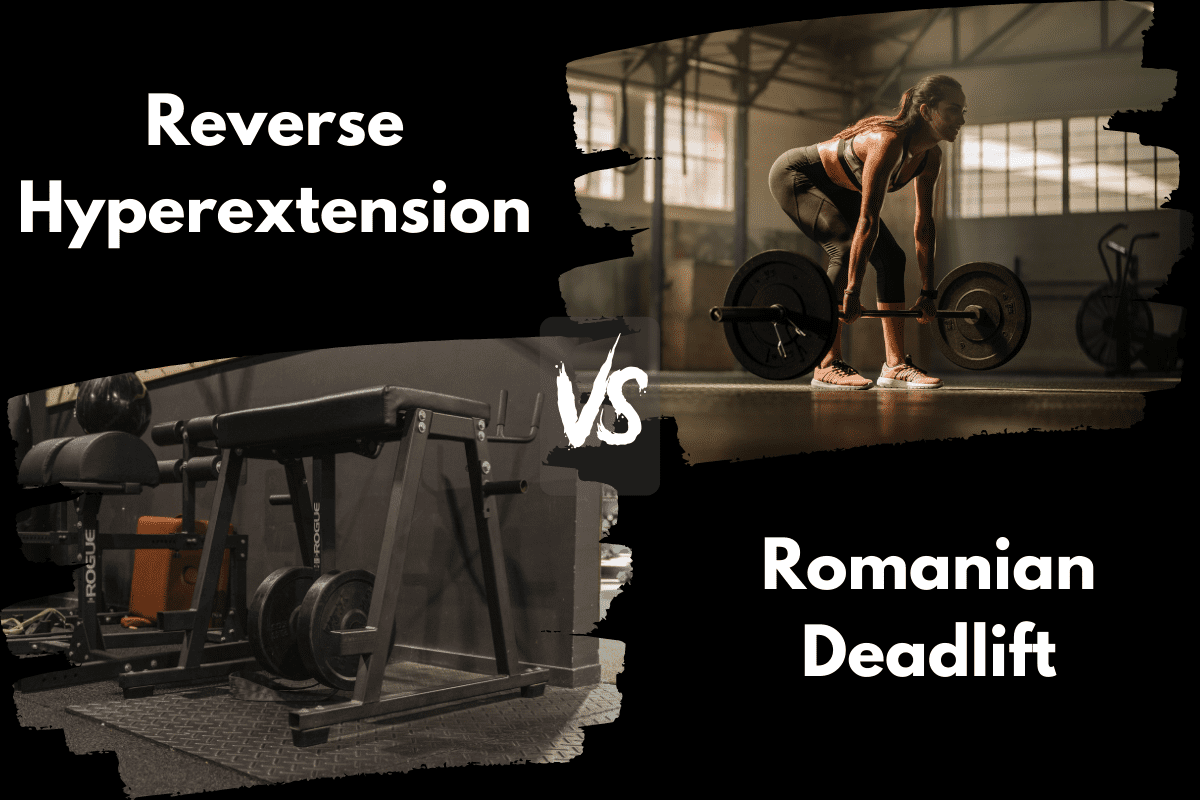Reverse Hypers vs RDL (Differences & Benefits)
If you’re looking to strengthen your lower back, glutes, and hamstrings, two popular (and effective) exercises to consider are the Reverse Hyperextension and the Romanian Deadlift, or RDL. Both of these exercises target the same muscle groups but in different ways.
In this article, I’ll compare and contrast these two exercises, exploring their benefits, differences, and considerations for incorporating them into your workout routine.
Let’s start with the Reverse Hyperextension.
Reverse Hypers
Equipment Needed
- Reverse Hyper or Glute Ham Machine
How To
- Grab the handles of the Reverse Hyper Machine and lay your torso across the platform.
- Set up your legs/feet with the resistance (will differ depending upon the machine)
- Keeping your legs straight, raise them up until they are parallel to the floor.
- Squeeze the glutes at the top and then lower the legs back down under control.
- Repeat until all reps are completed.
Coaching Points
There are specific Reverse Hyper machines. These machines allow you to add weight and lift the legs with the added resistance.
If you don’t have access to a Reverse Hyper machine, you can use a regular Glute Ham Machine. To add resistance, you can hold a medicine ball in between your feet.
Don’t have a Glute Ham Machine either? Here are 12 Reverse Hyper alternatives you can choose from.
Benefits of Reverse Hypers
Reverse Hyperextensions are one of these best exercises for strengthening the entire posterior chain, including low back (erector spinae, glutes and hamstrings).
Because Reverse Hypers can target important muscle groups for sports performance, such as the glutes and hamstrings, they can help to improve overall athletic performance.
Romanian Deadlift

Equipment Needed
- Barbell
- Weight Plates (Bumper or Iron)
How To
- Address the bar with feet shoulder-width apart, and toes straight ahead.
- Use a pronated grip about a thumb length from the start of the knurling.
- Now, with a good flat back, pick the bar up to a standing position.
- From here, put a slight bend in the knees and ‘set the back’ by squeezing the shoulder blades and engaging the lats.
- Brace the core and hinge forward by pushing the hips back.
- The bar should almost drag right down the legs, across the knees and straight down the shins. The whole foot should stay flat on the ground, but the weight should be on the mid-foot to heel.
- Maintain the neutral spine position throughout the descent and once you feel a good stretch in the hamstrings, drive the hips forward (hip extension) and return to the starting position.
Coaching Points
The ‘depth’ that each person gets will be different and absolutely solely dependent upon hamstring flexibility.
Do NOT try to ‘reach’ the barbell toward the ground because you believe the plates should touch the floor. If you have tight hamstrings you may be doing well to get the bar to mid-shin.
Trying to reach the bar to the floor will result in the lifter losing their neutral spine and rounding their back… which leads me right into common RDL mistakes.
Common RDL Form Mistakes
Easily the most common mistake (and easily identifiable) that I see with athletes for a Romanian Deadlift is rounding the back. This is usually due to either poor technique or simply using too much weight.
Use less weight if necessary and work on being able to keep the back engaged and the spine in a neutral position throughout the entire exercise. Rounding the back puts a lot of stress on the spine and can be very dangerous if not corrected. This absolutely has to be a main point of emphasis.
Another common RDL mistake is excessive bending of the knee. Try to maintain a slight knee bend with all of the movement coming from the hip hinge. More bend in the knees basically turns the movement more into a conventional deadlift rather than an RDL.
RELATED –> My 11 favorite Romanian Deadlift alternatives
Benefits of the RDL
The RDL, also referred to as a stiff leg deadlift, is a great exercise to work the posterior chain muscles, specifically the hamstrings, glutes and erector spinae of the low back.
Many of the movements that I utilize with athletes demand a very strong posterior chain (as does many sports movements as well). Olympic lifts, Back Squat and Front Squats are all great exercises for building strong, explosive athletes and all three demand a strong posterior chain.
Romanian deadlifts work as a terrific accessory lift to aid in the development of those bigger compound lifts.
Finally, the Romanian deadlift, as part of a holistic approach to strengthening the hamstrings and exposing the hamstrings to high-speed running can lower the risk of hamstring injuries.
Reverse Hypers vs RDL: Which is Better?
Now, let’s take a look at the two exercises and discuss if one is better than the other for some common lifting goals.
Better For Strength Development: Toss Up
My assumption is that if you came here already knowing the difference between a Reverse Hyperextension and an RDL, then this is question that’s on your mind. Which posterior chain movement is going to help you make strength gains on your Squats and Deadlifts?
The short answer is – they’re both great. Both exercises are extremely effective exercises and, in my opinion (assuming you have the equipment), both should be is pretty much anyone’s strength training plan.
Want the long answer?
I’ve not been able to find any studies looking directly at the muscle activation differences between Reverse Hypers and RDLs. However, if you include regular Hyperextensions into the mix then we can start to connect some dots.
A study in 2019* directly compared the muscle activity of the Biceps Femoris, Erector Spinae and Gluteus Maximus when doing Hyperexensions and Reverse Hyperextensions. They found very similar muscle activity across the entire posterior chain between the two exercises.
Now, take this study in 2021** that compared the muscle activity in the posterior chain when performing Hyperextensions and RDLs. They actually found that (though not reaching statistical significance) Hyperextensions had 23% more gluteus activation than RDLs and erector spinae was roughly the same for the both.
I know that’s not exactly apples to apples, but if you connect all the dots you find that – well, they’re both great.
Also, by incorporating both exercises periodically into your strength training, as I’m suggesting, you get to give your body new stimuli (which helps long-term growth) and you get to give your mind something fresh and new.
References
*Lawrence MA, Chin A and Swanson BT. Biomechanical comparison of the reverse hyperextension machine and the hyperextension exercise. J Strength Cond Res Article in Press, 2019
**Vidar Andersen, et al. “Comparison of Muscle Activity in Three Single-Joint, Hip Extension Exercises in Resistance-Trained Women,” Journal of Sports Science and Medicine, (2021) 20, 181-187

